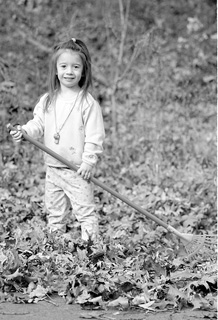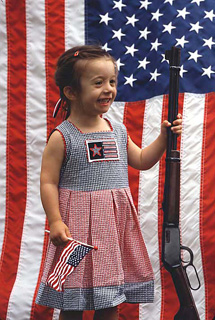I used to get a lot of e-mail from people who were just getting into photography, happened to have come upon one of these Konica SLR's or is interested in doing so, and were looking for advice. This is largely for posterity, since all new people getting into photography tend to go digital. If you are not one of them, good for you! You can get this gear quite cheaply and make excellent photographs.
 I
append here a recent set of recommendations for a beginner. Take them
with a grain of salt; they worked for me. Much of this applies to other
manual focus SLR cameras of the 70s and 80s. But I have specific
recommendations on Konicas and cannot compare them to other SLR models
(as I've not tried any others, except for my medium format cameras).
I
append here a recent set of recommendations for a beginner. Take them
with a grain of salt; they worked for me. Much of this applies to other
manual focus SLR cameras of the 70s and 80s. But I have specific
recommendations on Konicas and cannot compare them to other SLR models
(as I've not tried any others, except for my medium format cameras).
If you are just starting out in photography, let me suggest a plan to simplify things:
First, define some goals for yourself. Ask yourself what you want to make photographs of most? Do you have kids? Do you like to hike and love nature? Do you like street/city scenes? For me, it was important to have some sort of "hook" when I started; otherwise it's a bit overwhelming, you make photographs of everything, and it gets harder to learn and become proficient at one area. I started with people/kids back in the 90s, and I can tell you when you focus on a particular theme, you become progressively better at picking up the subtleties which make for photographs that stand out. For example, what light flatters people, what angle to shoot at, when to hit the shutter to capture an expression, etc. If you're into nature, then it's a whole other set of things you need to think about. I am just beginning to broaden my shooting after having shot hundreds of rolls of film each year.
Second, get a camera and 50mm Hexanon lens that's in good shape. Any model will do, especially the T3, N-T3, TC, T4, and FT-1. If you just came upon your camera (either by default or through Ebay) and it hasn't been used in a million years (which is probably the case), spend the money and have it reconditioned (cleaning, lubricating, adjusting, CLA). You should also have the camera recalibrated for silver-oxide batteries if it's an old mercury-driven camera (all of the Autoreflex cameras run on mercury which are no longer in production, the TC-X, FS-1, FP-1, and FT-1 do not). You will want to test and see if the batteries are working. Does the meter come on when you flip the camera on? Put a lens on, look in the view finder, set the camera at 1/125s and point it at a dark object then at a bright light. You should see the meter move top to bottom. I have had very good experiences with Greg Weber in Nebraska. He can CLA and recalibrate your existing camera or sell you one from his stock of cameras and lenses. When you are done, you should have a camera that is in great shape and is ready to shoot. Most of all, you can shoot with 100 percent confidence that everything is working as it should.
 Now that you have
the "dirty work" out of the way, head over to your local library and
take out loads of books (see my list). Some
will be more helpful than others. Just take out a bunch and start
reading. It is best to take out books from the 70's to early 80's
(libraries have lots of those). This way your learning will not get
muddled by autofocus discussions and other distracting gadgets. You
should learn about depth of field, shutter speed and its effect on
capturing images, all the controls on your camera, how camera's work,
how lenses work, how to compose, how to think about and use light, etc.
This will take several months, and all the while, you should
be taking pictures to experiment with your newfound knowledge.
Now that you have
the "dirty work" out of the way, head over to your local library and
take out loads of books (see my list). Some
will be more helpful than others. Just take out a bunch and start
reading. It is best to take out books from the 70's to early 80's
(libraries have lots of those). This way your learning will not get
muddled by autofocus discussions and other distracting gadgets. You
should learn about depth of field, shutter speed and its effect on
capturing images, all the controls on your camera, how camera's work,
how lenses work, how to compose, how to think about and use light, etc.
This will take several months, and all the while, you should
be taking pictures to experiment with your newfound knowledge.
After shooting for a while and reading, you will quickly learn whether you are into it or not. If you really get into it, you will want a collection of lenses and other stuff you may not have. Here's where Ebay will help and also poking around local camera stores (you will be suprised what they have!). You will also want to check out the used departments of B&H Photo/Video, Adorama, or KEH. For new camera products (straps, film, etc.), I stick with B&H and Adorama as they have great retail prices of photography products, are reputable, and have huge stock. B&H has better service and ordering, so now I buy all my gear there exclusively.
 For most work, I have found that merely three
lenses will cover nearly all needs, unless you're doing speciality
"close up" photography of things like bugs or a person's eye, or "long
telephoto" photography like shooting the moon, or need a fast zoom for
shooting indoor sports. For basic stuff, I recommend a 24mm or 28mm
wide angle,
anything in the 50mm range, and an 85mm, 100mm,
135mm, or 200mm.
For most work, I have found that merely three
lenses will cover nearly all needs, unless you're doing speciality
"close up" photography of things like bugs or a person's eye, or "long
telephoto" photography like shooting the moon, or need a fast zoom for
shooting indoor sports. For basic stuff, I recommend a 24mm or 28mm
wide angle,
anything in the 50mm range, and an 85mm, 100mm,
135mm, or 200mm.
On Ebay you can get get some great lenses cheap. Beware of fungus (see picture) which will keep growing and eventually degrade your image quality. I have been happy with Ebay, provided you ask enough questions of the seller, check his/her feedback, and look at the pictures carefully. With lenses ask: How many dust specs are in the lens? Any scratches? Any growths? Is the focussing barrel loose or tight? Smooth or scratchy? Does the lens open at all aperatures? etc. Now, most will not answer ALL your questions. But, depending on the answers, you can guage both the quality of the product and how honest the seller is. Using this strategy, I have never had a problem with lenses. Camera bodies are a separate thing. They have, of course, more parts that can break. I had bad experiences trying to buy a T3 camera body from Ebay (the three I bought were completely trash and luckily I was able to return them). If you are having bad luck with Ebay or you want the piece of mind of honesty and a 6-month warranty, Greg Weber is your man. You can also check out B&H, Adorama or KEH.
This is a generic photography question and not specific to Konica. Of course, the answer depends on what you are doing. If you start doing indoor shooting, you may need flash. For best results, bounce your light off either the ceiling or a specialty bouncer that attaches to your lens (like the Luminquest Pocket Bouncer or Sto-fen Omni-Bounce). Upgrade further to a couple of monolights and a backdrop. You will want a tripod to steady your shots, or if you shoot a lot of moving people, a monopod. You will probably want both. For sports, you will probably want a fast zoom lens. There aren't a lot out there, but I have found a Tokina AT-X 80-200/2.8 lens that suits me fine. You will need a basic selection of filters (81A/B/C or Tiffen 812, UV protectors for your lenses, linear polarizer, 1- and 2-stop ND filters) and a 24/28 wide angle lens hood and a metal normal lens hood for your 50 (or a rubber one). If you want to show your pictures on the web, you will have to buy a film scanner or have your film scanned to a PhotoCD upon processing (which is quite reasonable as of 2007, though if you shoot high volume it's much more expesive than digital). Finally, you will need to think about those little accessories, like a camera bag (or bags), a microfiber lens cleaning cloth, an antistatic brush, cans of compressed air to clean your lenses/slides, and a cable release so you can shoot with minimal vibration.
For cameras, I have two TC's, two T3N's (chrome/split): all have been CLA'd by Greg Weber and had the meter recalibrated for silver oxide batteries. I use all my gear, since I don't "collect". I usually shoot with two T3Ns, one with a wide angle and the other with a telephoto (or one with color and one black/white). For lenses, I have the Hexanon 24mm/2.8 (third most used lens), 28mm/3.5-16, 40/1.8, 50/1.4, 50/1.7, 85/1.8 (most used lens), 135/3.2, 200/4, 80-200/4 UC, Tokina AT-X 80-200/2.8 (second most used lens), and Hexanon 2X teleconverter. For accessories I have a Shepard Polaris digital light meter, Minolta Scan Dual film scanner (though I usually have a PhotoCD made when processing), Vivitar auto extension tubes for achieving really narrow depth-of-field, cable release, various filters for color/contrast correction (though the ones I use most often are the Tiffen 812 warming filter, polarizer, and ND filters), Bogen 3001 tripod with 3160 head, Velbon UP-4000 monopod with Bogen 3232 head, Vivitar 285HV flash, Achiever TZ250 flash, Vivitar flash bracket, 300WS Britek two strobe studio kit with stands and umbrellas, backdrop stands and various papers and muslins, slide accessories (PortaTrace 1012-2 lightbox, VisualPlus 6050V lightbox, Rodenstock 4X loupe, Hastings triplet 10X, Keystone slide projector with Kodak Ektanar 127/2.8 lens), camera bags by Tamrac and LowePro, camera straps by Op/tech, Tamrac, and Domke. For the T3N's I like the Tamrac N-45 strap that is really nice. For my medium format cameras, I use the Op/tech Pro straps. Late 2006 update: I made a smooth transition to digital and largely don't use my 35mm gear anymore. I've since sold one of my T3N's and 24/2.8 lens.
For film and lab recommendations, check out my film primer. Hope you found this helpful!